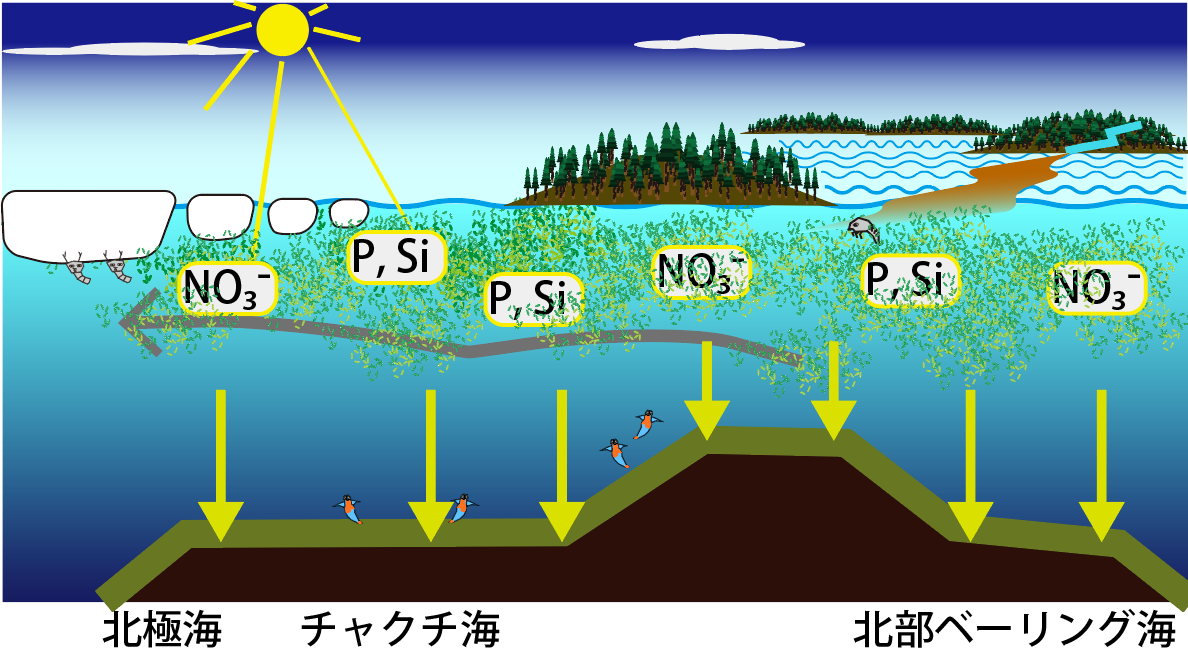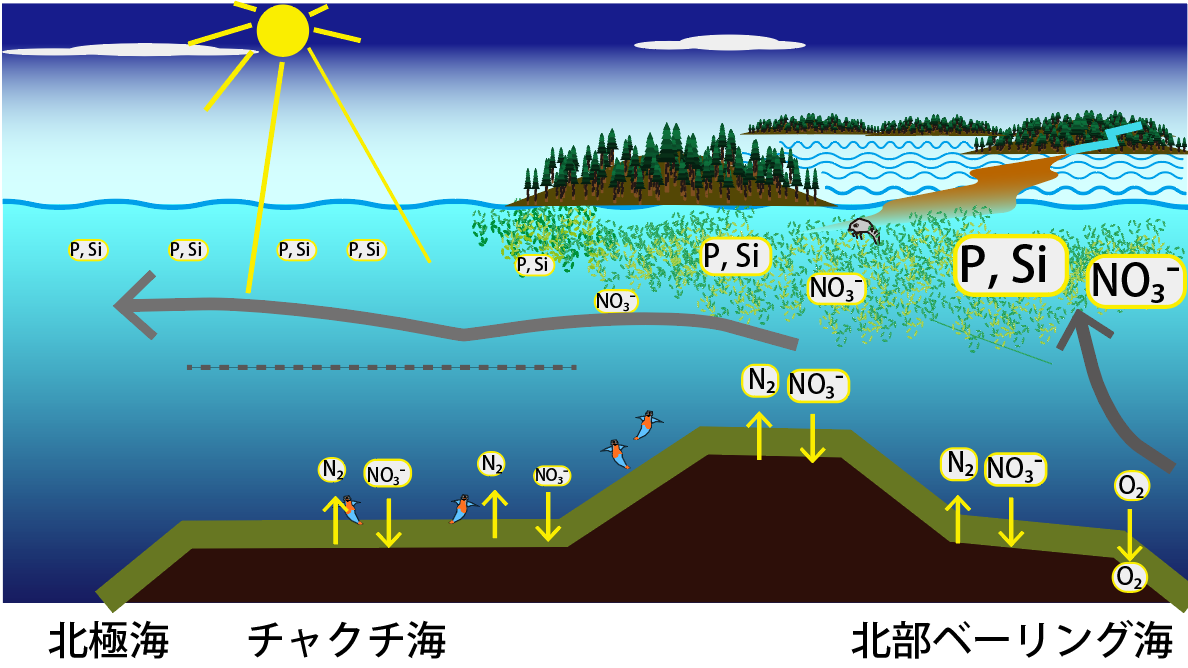The northern Bering Sea and the Chukchi Sea are covered by sea ice during winter. When the sea ice melts in the spring, the light environment rapidly improves and a spring bloom of diatoms occurs using the abundant nutrients available. The bloom that occurs at the ice edge is called "ice edge bloom". This bloom causes large amounts of organic particles to be deposited on the shallow seafloor of the continental shelf.

北極海: the Arctic Ocean チャクチ海: the Chukchi Sea 北部ベーリング海: the northern Bering Sea
On the northern Bering Sea continental shelf slope, phytoplankton blooms persist during spring and further, as intermediate water is continuously upwelling to the surface. Organic matter production is very active. On such a seafloor, oxygen consumption associated with organic matter decomposition is high. As oxygen concentrations decrease in seafloor sediments and approach zero, the activity of microorganisms (nitrate-reducing bacteria) that use nitrate ions as oxidants in place of oxygen increases. When nitrate respiration (nitrate reduction) occurs in the sediments, nitrate in seawater is lost and nitrogen molecules (N2) are generated. In primary production, phosphorus and nitrogen are lost at an average ratio of 16:1, but when nitrate reduction occurs, phosphorus is not reduced but nitrogen (nitrate) is lost. In such affected surface seawater, nitrate is depleted and primary production is limited, even though there is a surplus of phosphate and silicate. Seawater flows from the northern Bering shelf through the Bering Strait to the Chukchi Sea. In the Chukchi Sea, it is thought that nitrate depletion during the summer limits primary production.

北極海: the Arctic Ocean チャクチ海: the Chukchi Sea 北部ベーリング海: the northern Bering Sea